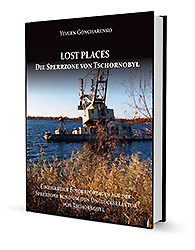 It is not more than 80 km from the city of Iwaki to the city of Minamisoma, but that’s if you go straight by the coast through the 20-kilometre evacuation zone of Fukushima-Daiichi Nuclear Power Plant... We have no permit to enter the Fukushima’s “twenty”, so we will have to make a detour of about 180 km. December 25, 2011, at 5 a.m. we leave Iwaki and go to Minamisoma.
It is not more than 80 km from the city of Iwaki to the city of Minamisoma, but that’s if you go straight by the coast through the 20-kilometre evacuation zone of Fukushima-Daiichi Nuclear Power Plant... We have no permit to enter the Fukushima’s “twenty”, so we will have to make a detour of about 180 km. December 25, 2011, at 5 a.m. we leave Iwaki and go to Minamisoma.
Around 6 a.m. day is breaking and we can discern wayside villages and towns. Gradually the level of gamma background begins go up: 0.6 –> 1 –> 2 μSv/h.
We make a stop in the village Usuishi (臼石村, which means “stone mortar”), which is a part of the village of Iitate (饭馆村). This is our first town in Japan, abandoned by people, so the look of its powdered with snow deserted streets became imprinted on my memory. I've seen dozens of abandoned villages in the Chornobyl Zone... But they have been abandoned long ago and long ago lost any connection with people, becoming part of nature. But here human presence still has been felt very strongly and this made me sick at heart.
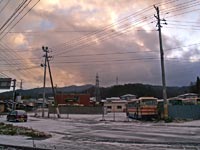 |
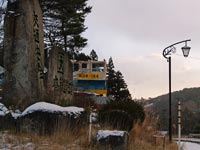 |
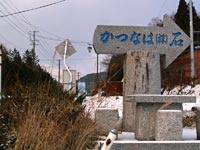 |
This mountain village in 42 kilometres from the Fukushima-Daiichi Nuclear Power Plant is in the centre of the north-west Fukushima track and was evacuated at the end of April 2011.
The level of gamma background in the village is about 5 μSv/h, sometimes up to 10 μSv/h.
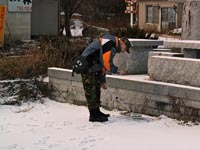 |
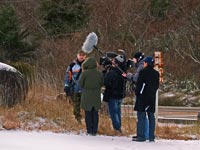 |
 |
We continue our journey to Minamisoma. The road dips to a valley. Gamma background level is gradually come down to 1.5 μSv/h. At 8:30 we drive into the city. From the cold snowy winter mountains, we find ourselves in a warm, sunny autumn.
Minamisoma (南相馬市)
Minamisoma City is located in the north-eastern part of Fukushima prefecture, Tohoku region. According to the tradition of modern Japan, as the city Minamisoma exists only since 2006, when it was formed by merging of Haramachi (原町市), Odaka (小高町) and Kashima (鹿岛町). It is bordering with the city of Soma (相马市), town Namie (浪江町) and the village Iitate (饭馆村). The distance from the Fukushima-Daiichi Nuclear Power Plant to Minamisoma is about 23 km.
As of March 11, 2011 in the city 71 561 people lived, 80% evacuated. Later, many people came back. Mostly older people, adults, without children. Now in Minamisoma there is about half of the last number of inhabitants. According to the official website of the city on February 16, 2012 in the city 45,439 residents live, which is about 64% of the original population. Completely evacuated area is Odaka (former city Odaka), which is in the 20-kilometre zone of obligatory resettlement. Kashima, the region-city farthest from the Fukushima-Daiichi, is home to 13,476 people (there were 11,603, i.e. the population increased), in Haramachi 31,963 people (was 47,116, the population declined.)
Minamisoma has been hit hard by the tsunami March 11, 2011. As of April 9, 2011 400 people died, 1,100 were considered missing.

By 9 a.m. we arrived at the Shinto Soma Ota Shrine (相马太田神社), our meeting place with Mr Kenro Okumura, a local Safecast volunteer.
Gamma background is about 1 μSv/h.
Soma Ota Shrine is a historic place and deserves an individual story.
It is in this place in 937 C.E. was the great battle of samurai families. And in its remembrance each year, for last 1075 years, here take place the samurai festival Soma Namaoi (相马野马追) – Soma Wild Horse Chase. The festival runs from last Saturday through Monday of July. It is a connection of a religious ceremony, military training and social action. More than 600 riders, the heirs of samurai families, organize large-scale race on Haramachi fields. In the festival eve all place is illuminated by lights of many campfires. The morning of the first day of the festival begins with a prayer of the present head of the Soma clan – Soma Kazutane, thirty-third heir of the clan of Soma, followed by samurais, wearing battle armour with the flags of their families. A certain pride of place in the festival must be given to Minamisoma shrines Soma Ota and Odaka and to Nakamura Shrine in Soma. These three shrines are the organizers of the festival over the centuries.
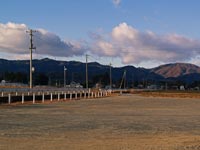 |
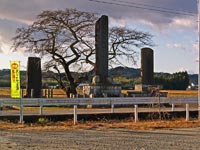 |
 |
Now, from ancient times let’s come back to nowadays.
Mr Kenro Okumura – one of those volunteers scout-dosimetrists in Minamisoma. Safecast equipped him pretty well: searching scintillator BNC Model SAM 940 Defender/Revealer Isotope Identification with Reachback Program with GPS tracker Etrex from Garmin and the Inspector Alert from International Medcom, Inc. Every day he loads into his truck an ATV, dosimetric devises and rides through the valleys and mountains of Minamisoma measuring the levels of gamma background. Kenro Okumura, an ordinary farmer, who lived in the 21 kilometres away from the crippled nuclear power plant Fukushima Daiichi, now is a volunteer scout-dosimetrists.
 |
 |
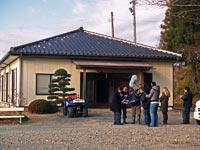 |
Kenro Okumura invited me to attend the meeting of the local “headquarters of elimination of consequences of accident”. Recently, the Ministry of Environment of Japan sent to the prefecture of Fukushima their tips and advices on decontamination and organizations of a radioactive waste temporary localization sites.
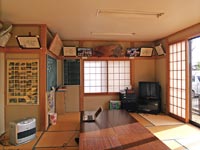 |
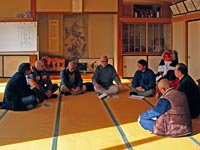 |
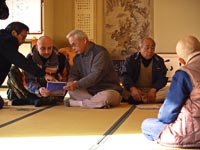 |
After the “headquarters” meeting we, together with Mr Kenro Okumura and his colleague Mr Ara Teruo, leave to the measurements. Levels of gamma background is about 5 μSv/h.
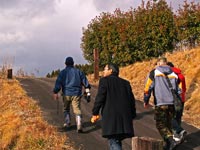 |
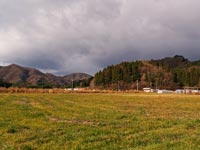 |
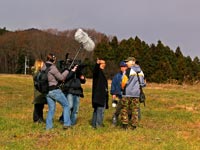 |
Behind these mountains – the exclusion zone, the 20-kilometres zone of evacuation. In the middle photo on the horizon can be seen Haramachi Thermal Power Plant, which is owned by Tohoku Electric Power Co. The plant has been hit hard by the tsunami. Even the ship with 75 thousand tons of coal, moored near the plant pier, during the tsunami has thrown for 100 metres deep into the coast. Besides, the reconstruction of Haramachi TPP has been suspended due to evacuation of Minamisoma. Now the company hopes to restart the plant in summer 2013.
 |
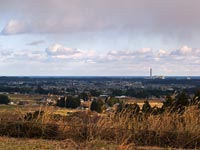 |
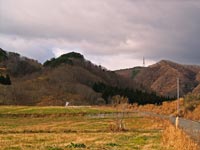 |
Checkpoint on the border of 20 km evacuation zone. The road number 34. Gamma background is about 1.5 μSv/h. I find it hard to believe, but there is no dosimetric control on checkpoint!
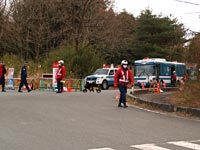 |
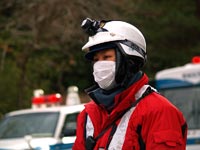 |
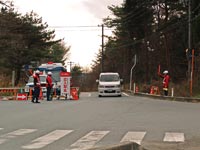 |
On secondary roads there are no checkpoints, just low fence and signs with warning information. The road number 49. Gamma background is about 12 μSv/h
It was a bit unexpected and at the same time nice to see in the hands of Ara Teruo, one of the local volunteer scout-dosimetrists, our Lviv dosimeter “Pripyat”, edition 1991!
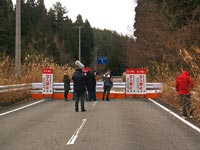 |
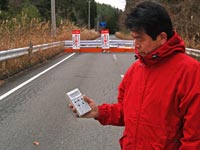 |
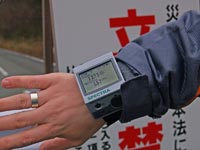 |
For many years in the Chernobyl exclusion zone, I got used to a certain environment. Accustomed to the quiet woodland nature, to marshes, to overgrown with high grass fields, to the rivers Pripyat and Uzh, to the hares, wolves, foxes and wild boars... And of course to dosimeter’ beep. Here everything is different, except for radiation. The same beeping of the dosimeter, but around me there is a different nature, wildlife. The mountains, mountain streams, bamboo groves and... monkeys, with interest examine us from a safe distance.
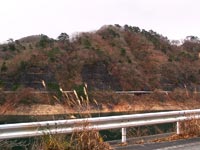 |
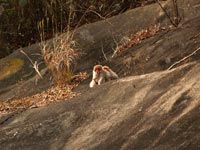 |
 |
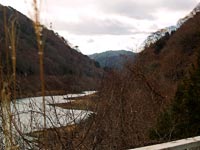 |
 |
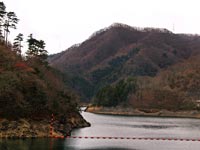 |
We say goodbye to Kenro Okumura and Ara Teruo and come back to Minamisoma. Ahead of us a settlement in a provincial Japanese hotel with tiny rooms, more like a train compartment, lunch in a traditional Japanese restaurant, where everyone take their shoes off at the entrance and sitting upright on the tatami floor at the low tables; and familiarity with the “frontline” Minamisoma city and its residents.
| Minamisoma fights (南相馬市). Fukushima Prefecture. Day Four< Prev | Next >Iwaki (いわき市). Fukushima Prefecture. Day Three |
|---|








